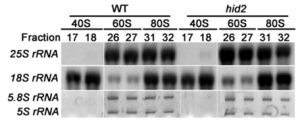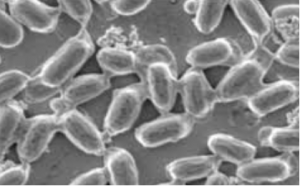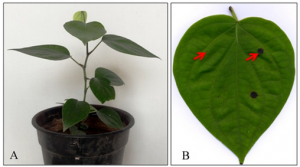|
SAR11 lipid renovation in response to phosphate starvation
Wednesday, 2015/07/01 | 09:29:54
|
|
Paul Carini, Benjamin A. S. Van Mooy, J. Cameron Thrash, Angelicque White, Yanlin Zhao, Emily O. Campbell, Helen F. Fredricks, and Stephen J. Giovannoni ENVIRONMENTAL SCIENCE SignificanceNonphosphorus lipids produced by heterotrophic bacteria have been measured in marine ecosystems without an understanding of their origins or role. This work shows SAR11 chemoheterotrophic bacteria synthesize multiple nonphosphorus lipids in response to phosphate depletion. Because this process results in a reduced cellular P:C ratio, it impacts our understanding of ocean processes related to cellular elemental stoichiometry by showing how different environmental parameters alter P:C ratios in heterotrophs. Also, SAR11 grown with excess organophosphonate synthesized phosphorus-free lipids. This finding contrasts the contemporary view of organophosphorus utilization because organophosphate-derived phosphorus did not equally substitute for inorganic phosphate in lipids. Considering lipid phosphorus content was lower in cells using organophosphonate, phosphorus-based productivity estimates may vary as a function of phosphorus source. AbstractPhytoplankton inhabiting oligotrophic ocean gyres actively reduce their phosphorus demand by replacing polar membrane phospholipids with those lacking phosphorus. Although the synthesis of nonphosphorus lipids is well documented in some heterotrophic bacterial lineages, phosphorus-free lipid synthesis in oligotrophic marine chemoheterotrophs has not been directly demonstrated, implying they are disadvantaged in phosphate-deplete ecosystems, relative to phytoplankton. Here, we show the SAR11 clade chemoheterotroph Pelagibacter sp. str. HTCC7211 renovates membrane lipids when phosphate starved by replacing a portion of its phospholipids with monoglucosyl- and glucuronosyl-diacylglycerols and by synthesizing new ornithine lipids. Lipid profiles of cells grown with excess phosphate consisted entirely of phospholipids. Conversely, up to 40% of the total lipids were converted to nonphosphorus lipids when cells were starved for phosphate, or when growing on methylphosphonate. Cells sequentially limited by phosphate and methylphosphonate transformed >75% of their lipids to phosphorus-free analogs. During phosphate starvation, a four-gene cluster was significantly up-regulated that likely encodes the enzymes responsible for lipid renovation. These genes were found in Pelagibacterales strains isolated from a phosphate-deficient ocean gyre, but not in other strains from coastal environments, suggesting alternate lipid synthesis is a specific adaptation to phosphate scarcity. Similar gene clusters are found in the genomes of other marine α-proteobacteria, implying lipid renovation is a common strategy used by heterotrophic cells to reduce their requirement for phosphorus in oligotrophic habitats.
See: http://www.pnas.org/content/112/25/7767.abstract PNAS June 23, 2015 vol. 112 no. 25 7767-7772
Fig. 1. Distribution of nonphosphorus lipid synthesis genes in α-proteobacteria. Tree inferred from concatenated 16S/23S rRNA gene sequences. Most monophyletic groups where all members had the same patterns of gene distribution were collapsed. The outgroup taxa can be found in Dataset S1. Node labels represent Shimodaira–Hasegawa confidence test values: black filled, ≥0.9; gray filled, 0.7–0.9; white filled, ≤0.7. Pelagibacter sp. str. HTCC7211 gene orientation is depicted above colored bars; “HTCC7211_000” for each gene identifier has been omitted. The colored bars are a visual representation of Hal clustering results. Bars indicate ortholog presence (filled), absence (open), and chromosomal synteny (black line between bars), or lack of synteny (no black line between bars), for the four genes. Those taxa with adjacent glycosyltransferases and metallophosphoesterases are colored blue in the tree for ease of identification. Numbers inside of colored boxes indicate genes for which functions have been characterized, as follows: 1, SMc01116 (OlsB, E. meliloti); 2, RCAP_rcc02997 (OlsB, R. capsulatus); 3, SMc00171 (phospholipase C, E. meliloti); 4, atu2297 (GADG/MGDG glycosyltransferase, A. fabrum, in collapsed node). Note 1: Sulfitobacter spp., O. indolifex, R. denitrificans and litoralis, Rhodobacterales HTCC2083. Note 2: Erythrobacter HTCC2594/NAP1, and C. bathyomarinum JL354, N. aromaticivorans DSM 12444, Sphingobium spp, Sphingopyxis alaskensis RB2256, Sphingomonas SKA58.
|
|
|
|
[ Other News ]___________________________________________________
|


 Curently online :
Curently online :
 Total visitors :
Total visitors :
(8).png)



















